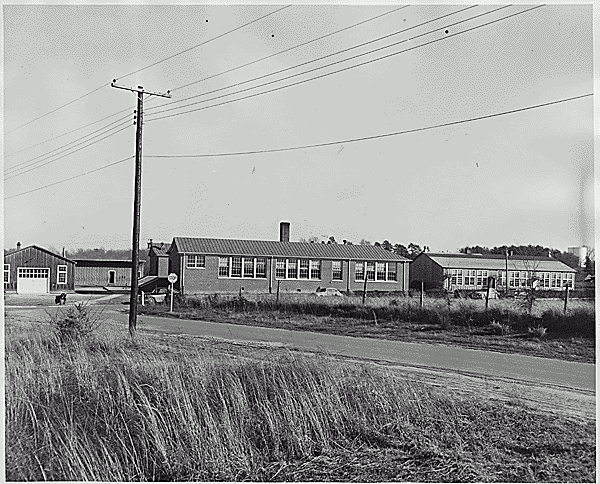History
I will create two separate time lines to streamline the information on Farmville & Longwood history.
Farmville History
The charming small-town that we now know as the home to Longwood University is an area rooted in historical significance. The town of Farmville, founded in 1798, had involvement in the Civil War and now acts a part of the Civil Rights Trail.
http://www.farmvilleareachamber.org/history
The last major battle of the Civil War took place near Farmville at Sayler’s Creek. During the final days of the Civil War in April 1865, General Lee retreated directly through Farmville. The Confederates attempted to burn the railroad and High Bridge so the Union Army could not follow them. They were unsuccessful and the Union Army’s pursuit ended at the surrender in Appomattox just days later.
https://thehistorymom.com/2021/02/17/farmville-virginia/
The fight for civil rights drew Martin Luther King, Jr. to Farmville in 1962. Injustices for African American students at Robert Russa Moton High School were apparent through the lack of gymnasium, cafeteria, lockers, or auditorium. The school was built for 180 student capacity and held 450 students by 1950. In order to accommodate additional students, the school board built plywood structures covered with tarpaper and heated them with pot-bellied stoves. This led to “tarpaper shacks” being a symbol for segregation in education.


In 1951, African American students from Moton High School fought for access to equal education. On April 23, 1951 Barbara Johns, an eleventh-grader at the time, led all 450 students in an organized strike. She encourage them that they should walk out until a new building was under construction. The protest included fellow classmates, community members, NAACP attorneys. A lawsuit was filed against the School Board of Prince Edward County Later incorporated into Brown v. Board of Education.
https://americanhistory.si.edu/brown/history/4-five/farmville-virginia-1.html

Longwood History
Before Longwood University came to be it was originally owned by a Scottish immigrant in 1765 and was later sold to Abraham B. Venable in 1811. This was the birthplace of two known Confederate offices: Joseph E. Johnston and Charles S. Venable in 1827. In 1839 it was referred to as the Farmville Female Seminary Association. The area was then purchased by the State Teachers College in 1929 and later renamed itself after the Longwood House.
https://libguides.longwood.edu/longwoodhouse
After undergoing another name change in 1949, Longwood College became co-ed. Then in 2002, Virginia Governor Mark R. Warner signed into legislation making Longwood College into Longwood University.
Chi is a secret society on Longwood’s campus founded on October 15, 1900 with the purpose to promote and maintain the spirit of cooperation through every stage of college life. Chi droppings, originally called “CHI-kerchiefs,” are meant for students to find them around campus and pass them down to friends before leaving. The idea will continue to build and spread the spirit of Longwood. Chi’s symbol is the rotunda, but it is considered bad luck to step on it.

PRINCEPS is another secret society on Longwood’s campus focused on promoting leadership and service throughout the community. Founded in 1992, the symbol of PRINCEPS is a crown with with seven points, symbolizing the seven key principles of leadership.

Longwood experienced three fires throughout its existence. The first fire occurred in 1923, breaking out in the South Wing behind the Rotunda, destroying the kitchen, dining room, dorms for 100 students. A servant of the college, named Aunt Lou died from this fire. Her duty was “Head of The Home” to greet students and guests at the door. The 2nd fire occurred during 1949, engulfed the East Wing and destroyed classrooms, dorms, auditorium, and possessions. $5,000 was raised to replace books and clothing. It has been 110 years since the college was founded on March 6, 1949. The 3rd fire occurred on April 24, 2001, where the Colonnades Residence Halls, including French and South Ruffner, Tabb, and the South Tabb were impacted. The fire continued for 2 days after 3.2 million gallons of water and 181 firefighters. The fire continued to damage surrounding buildings including the Rotunda that fell to the ground about an hour after it started.
